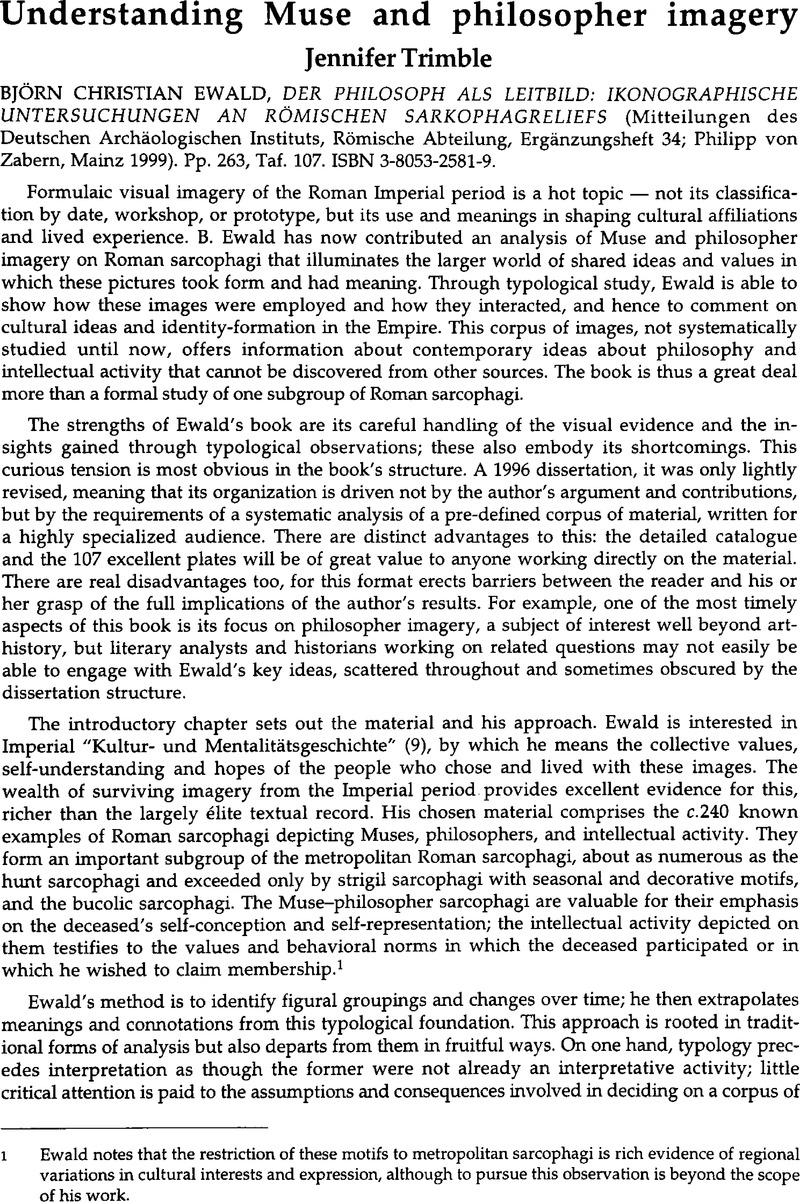No CrossRef data available.
Article contents
Understanding Muse and philosopher imagery - Björn Christian Ewald, DER PHILOSOPH ALS LEITBILD: IKONOGRAPHISCHE UNTERSUCHUNGEN AN RÖMISCHEN SARKOPHAGRELIEFS (Mitteilungen des Deutschen Archäologischen Instituts, Römische Abteilung, Ergänzungsheft 34; Philipp von Zabern, Mainz 1999). Pp. 263, Taf. 107. ISBN 3-8053-2581-9.
Published online by Cambridge University Press: 16 February 2015
Abstract

- Type
- Reviews
- Information
- Copyright
- Copyright © Journal of Roman Archaeology L.L.C. 2002
References
1 Ewald notes that the restriction of these motifs to metropolitan sarcophagi is rich evidence of regional variations in cultural interests and expression, although to pursue this observation is beyond the scope of his work.
2 Alternatively, the male's companion can be an Orans figure, denoting his pietas.
3 Gleason, M., Making men: sophists and self-presentation in ancient Rome (Princeton 1995)Google Scholar.




